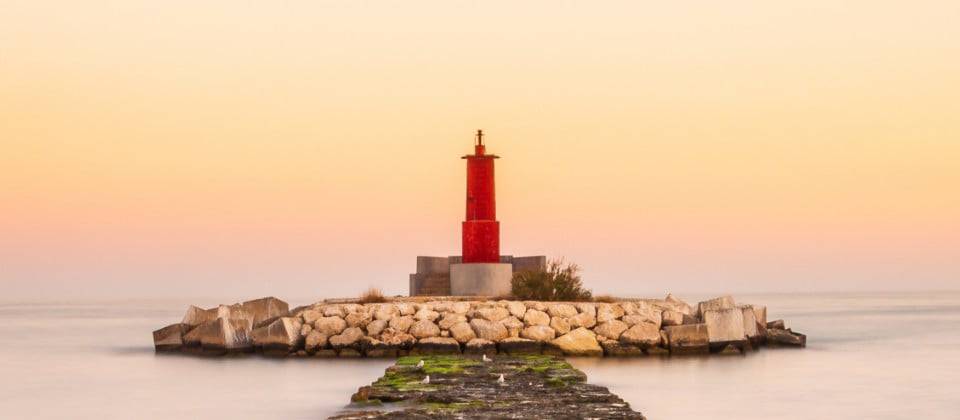The wild side of Andalusia: discover the hinterland of the Costa del Sol
22 Sep 2022
The Costa del Sol is rightly considered one of the most popular places in Europe for anyone who loves
sun, sea and a touch of luxury. But the region to which the coast belongs has
much more to offer. Andalusia is a gigantic area stretching across the entire southern side of Spain - eight provinces and three times the area of Belgium.
In other words, anyone who buys a (second) home on the Costa del Sol gets a huge
playground to explore on top of it for free. We present our tips - some off the beaten path, some touristy, all worth a day trip or more.
Almeria Province
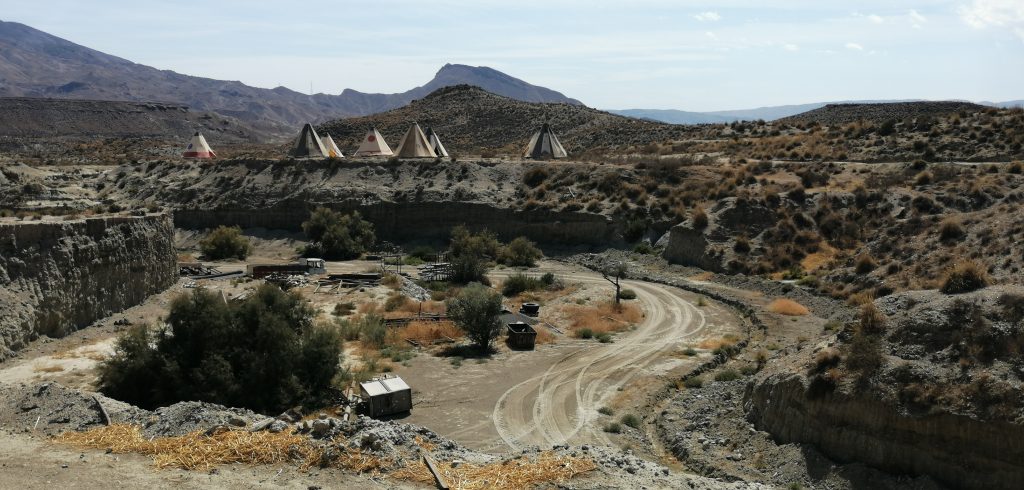
Almeria may be in the east of the region, but this is the wild west of Andalusia. Barely 20 kilometers inland from Almeria stretches a desert, a succession of dusty gullies and canyons, dry river beds, tunnels carved into rock gorges and sun-scorched earth where nothing grows except cacti. The ideal setting for Sergio Leone's spaghetti westerns - he shot The Good, the Bad and the Ugly, among others, here.
-
The villages of the Alpujarra
On the border of Almeria and Granada lies La Alpujarra, the foothills of the Sierra Nevada. The villages on the Granada side are more familiar and lush, but those on the Almeria side are no less suitable as a base for grueling bike rides or beautiful hikes. Some villages: Ohanes, Canjáyar, Fondón, Luajar de Andarax.
Speaking of hiking, the Sierra de Maria in remote northern Almeria also beckons mountain goats. Step out of the village of Maria and, especially outside the high season, you will have the trails to yourself here - if you don't count the foxes and the (real) mountain goats, at least. Those who don't feel like buckling up their hiking boots can enjoy the view from Vélez Blanco, a photogenic white castle village that towers high above the valley.
Those tired of the Costa del Sol's crowded shores for a while can head here for a shot of peace and quiet. Cabo de Gata is considered the largest coastal protected area in Andalusia, remote, wild and unspoiled. Cala de Enmedio is accessible only on foot via a path through eroded dunes. So from fat Germans with boomboxes stuck on the schlager channel you will not be bothered here. Nearby is Níjar, known for its hand-woven carpets (
jarapas
).
Province of Cadiz
The Coast of Light is the southernmost tip of continental Europe - Tarifa almost touches the African continent. The moody Atlantic Ocean attracts kite and windsurfers; the beaches of Valdevaqueros sound as familiar to them as the Eiffel Tower to the average tourist. Tarifa has been a magnet for hippies and other long-haired scum since time immemorial. If you can't eat vegetarian here, then nowhere.
Ornithologists and history buffs won't easily turn down a trip to the Costa de la Luz either. The former because of the annual migration of griffon vultures, eagles and storks, the latter to behold the legacy of Romans and older tribes. No desire to lift your butt? Then sample the local
pescaíto frito
, crispy fried fish.
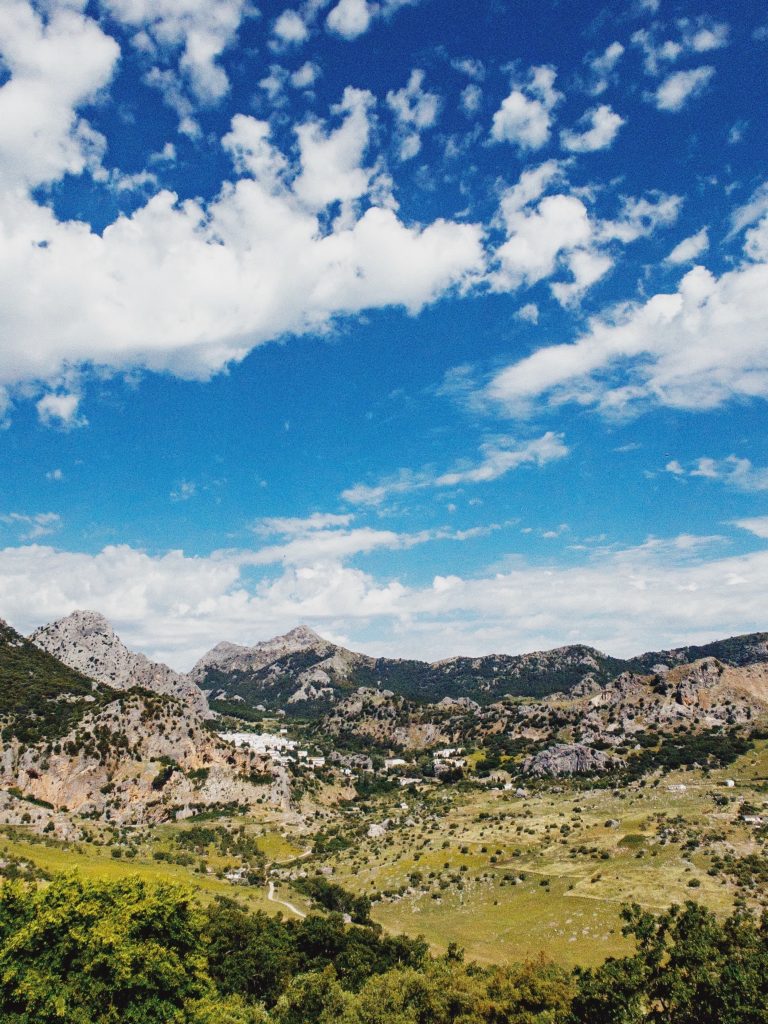
A white pueblo in the national park of the same name, from where miles of hiking trails wind toward surrounding green mountains. Grazalema also makes an excellent base for exploring the region's other pueblos blancos. Attention, cheese lovers: the famous Payoyo comes from here. In the village of El Bosque, learn all about it at a cheese museum.
Town with a Moorish fortress - including ancient mosque and Arab baths - as well as a Gothic cathedral. The latter looks like a miniature of Seville's much more famous cathedral. Jerez da la Frontera is thoroughly Andalusian. Read: known for the sake of horses and flamenco, although burgundians will especially appreciate that other flavoring, sherry.
According to some sources, three billion olive trees grow around Olvera. We have not gone to count them personally, but do not dispute that it is true. This Moorish village is considered one of Andalusia's visually most beautiful pueblo blancos - a Rorschach patch of pale white and brown, with a castle and a church as eye-catchers on top. Those who cannot get enough of white: Setenil de las Bodegas (white houses on top of a cliff) and Zahara de la Sierra (on a hill) also pay off.
Province of Córdoba
Another white village, the heart of the cheese and olive regions of Cordoba. A path leads up the hill to a castle, so old that it becomes distorted with the rocks on which it was once built. See photo in header. Afterwards, you can replenish the calories consumed to your heart's content with regional dishes on one of the many terraces.
Many tourists visit Cordoba as a day trip from Seville, but the city has enough in store to warrant a multi-day stay. In casu: a solid Moorish stamp, a rich Jewish past, famous gardens and patios. Just outside the city is the Medina Azahara, the ruins from which the Moors once ruled the caliphate of Cordoba.
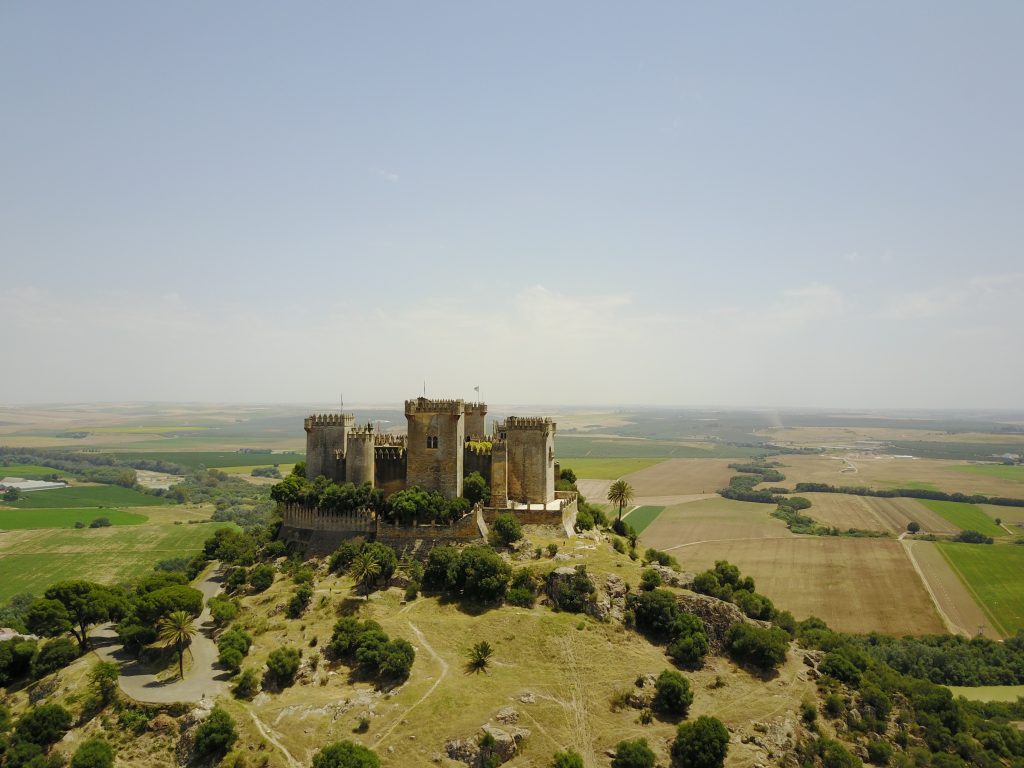
Fans of Game of Thrones should pass in Almodóvar del Río, a village about 25 kilometers west of Córdoba. They will recognize the castle of House Tyrell.
Another impossibly photogenic village, located in a bend of the Guadalquivir River. Photographers in particular will lick thumbs and fingers from a visit: on such a slope, each alley leads to a vantage point more impressive than the previous one.
Granada Province
We already mentioned the mountain villages of Almeria, but even on the other side, la Alpujarra is a great region for those who like to hike. In turn, the Sierra Nevada, a little higher up, is a veritable eldorado for lovers of the outdoors. In winter you can ski and snowboard, in summer you can hike and mountain bike, and in between wildflowers color the flanks.
Over the Pico Veleta winds a route that was once considered the highest asphalt road on the European continent, 3380 meters above sea level. No wonder the track is popular with car manufacturers, who test their latest models there. Today, the road is closed to motorized traffic above Hoya de la Mora, at an altitude of about 2,500 meters; however, it is still allowed on foot or by bicycle.

Lanjarón is the star of la Alpujarra. This pueblo is best known as the Spa of Spain; the best-known brand of bottled water comes from here. No wonder Lanjarón is all about water. Nice touch: the water is also said to be therapeutic.

A pueblo with a skyline - and what a one! An ancient Moorish castle shines like a crown atop this white village. Add to this the only round church built in Spain after the 15th century - the Iglesia de Encarnación - and you know that Montefrío is of exceptional historical value. You can fortify the inner man at any local cafe with morcilla, Spanish blood sausage.
Aka Lake Negratin, some say the most beautiful in all of Andalusia. By car, you drive all the way around it - the color ranges from deep blue to bright turquoise. Several rock formations encircle the lake, including Cerro Jabalcón (1494 meters). In the summer, Spaniards like to flock to the Embalse del Negratín to have fun with all kinds of water activities; in all other seasons, you will encounter few people.
Province of Huelva
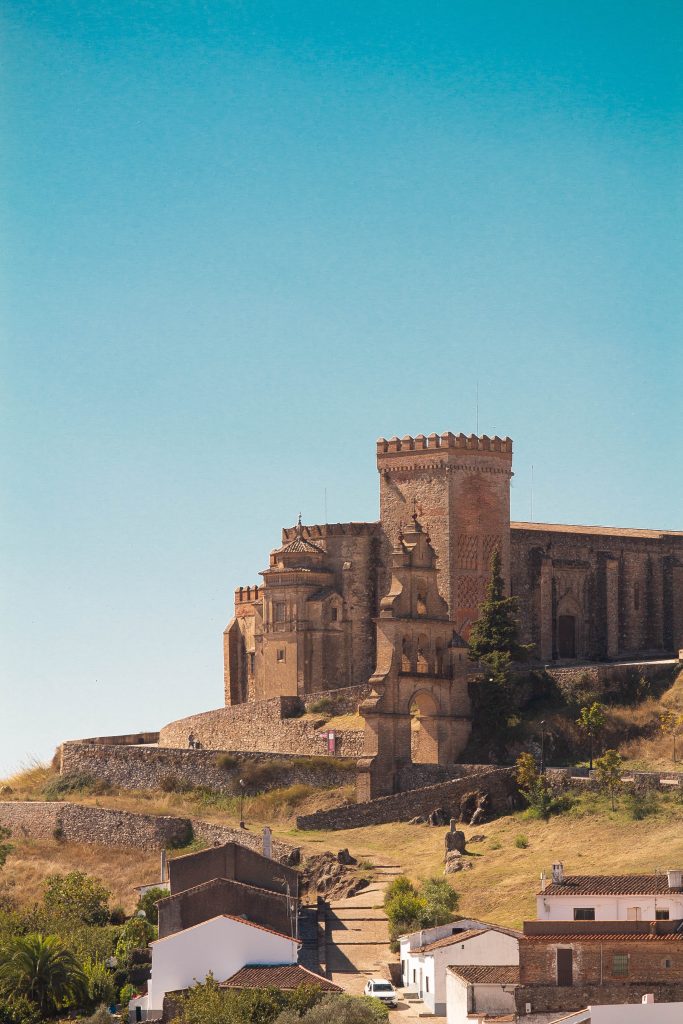
This mountain range is sandwiched between Portugal to the west and Extramadura to the north. In many parts of the sierra, you are so close to your Iberian neighbor that Portuguese radio stations come through more smoothly than Spanish ones. Its borders are marked by rivers and ruins and are among the oldest in Europe. Smuggling here was long a way to make ends meet and pad the coffers. Speaking of bacon, Spain's best jamón, from black pigs, comes from here.
In Zufre, horses race through the old cobblestone roads in late August, spectators cheer the spectacle from their balconies. Santa Ana la Real is a heaven for hikers. And Aracena is a great base from which to explore all that beauty - the largest village in the sierra of the same name, with a cave complex, a castle and a slew of pot stores selling the region's typical red ceramics.
Unlike those in Ronda or Cordoba, you can admire the Moorish architecture of Almonastar la Real without hordes of other tourists. This run-down village has an old mosque with thick arches and a bull ring next to it.
Dusty Andalusian village, ideal for soaking up the traditional atmosphere over a drink at a local bar. Also a pilgrimage site where pilgrims come to honor the Virgin Mary and a stopping place on the way to Doñana National Park.
A succession of forests, marshes and vast beaches, crossroads of migratory birds migrating between Europe and Africa, as well as one of the few places on earth where the endangered Iberian lynx roams. Though chances are slim that you can actually spot the "ghost of the forest.
Province of Jaén
People in the know call Jaén's olive oil the best in the world. Anyone driving through the province cannot ignore it. This village is also completely surrounded by olive trees. Once an important border post, Alcaudete separated Catholic and Moorish Spain. Today, only the castle is reminiscent of those times.
Thick droves of tourists trample Andalusian cities like Cordoba, Seville and Granada like a horde of buffalo. Jaén, on the other hand, largely ignores them. This makes it perhaps the most relaxed provincial capital in Andalusia. Take advantage of it - the cozy
centro histórico
, with
parador
and Renaissance-style cathedral, is well worth a visit.
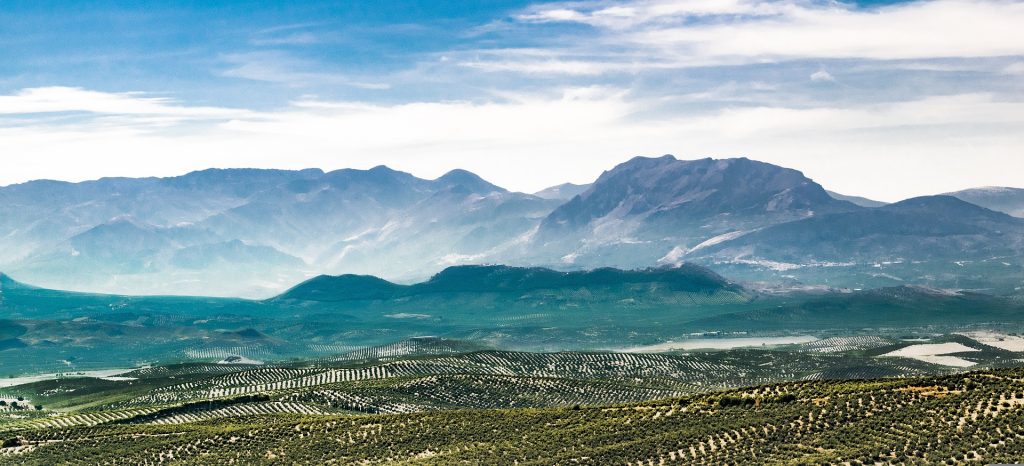
These two small towns are almost always mentioned in the same breath. They largely reflect the Moorish 9th century and the Reconquista of the 13th century. Both have been awarded by UNESCO. On the outskirts of Úbeda is a visitor center about olive oil - where you can not only taste and buy the tasty goodness, but where you also look out over vast olive groves. And with its narrow alleys surrounding a cathedral, Baeza is among the best Spain has to offer in terms of Italian Renaissance architecture.
-
Las Sierras de Cazorla, Segura y Las Villas
Lush forests, rugged mountains and trails that lead to the most magnificent viewpoints: together, the three sierras make up the largest protected area in Spain. Need we say more?
Málaga Province
Drive about twenty kilometers inland from the Costa del Sol and you will land on wooded hills and in villages where time seems to stand still. In this valley lie the most beautiful
pueblos blancos
of the province, for example, Atajate, Benarrabá and Algatocín. The streets of Genalguacil are filled with art each August during a biennial, and the old castle of Gaucín offers beautiful views of Ronda and the Genal Valley.
Antequera is right in the middle of Andalusia, yet many travelers skip this town. That's a shame, because here you can get lost in the cozy alleys of the Moorish Quarter and soak up the authentic local atmosphere culture without the swarms of tourists. The Alcazaba is a smaller version of the Alhambra, again without the hordes. In turn, the Dólmenes, monolithic burial sites from the Bronze Age, made it to the UNESCO list. Definitely taste:
polvorones
, candy that all of Spain feasts on during the holidays.
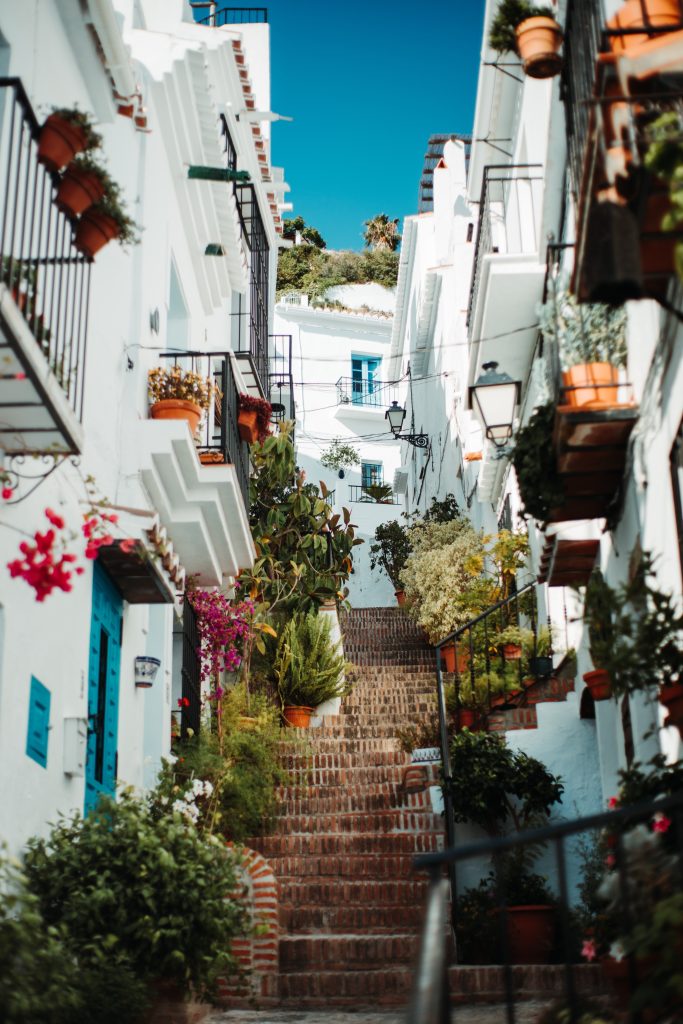
Day trippers from Nerja and Málaga discover Frigiliana in ever-increasing numbers, yet the town manages to retain its charm. With streets that invite strolling, you may understand why this gem regularly makes it to the list of "pueblos mas bonitos de España.
Twenty kilometers from Ronda lies this small archaeological site, which includes the remains of a Roman theater. One of the walls dates back to the first century AD. The site is not as vast as that of Italica, near Seville. On the other hand, you can have the ruins to yourself if you arrive early enough.
Seville Province
Everyone knows Seville as the Andalusia of the books. That is certainly true of this area south of the city. Here time ticks a little slower, life runs more leisurely and you will find sun-kissed fields, olive groves, storks on bell towers, straight Roman roads and
cortijos
, old farmhouses.
When Seville is bursting at the seams with tourists, Carmona is a more relaxed alternative. This town is known for tapas like
salmorejo
(the creamy sister of gazpacho) and
caracoles
(snails)
.
Feast on them! Or have a coffee at your leisure in the market - a converted monastery.
Another place for foodies to indulge, especially during a festival dedicated to flamenco and gazpacho.
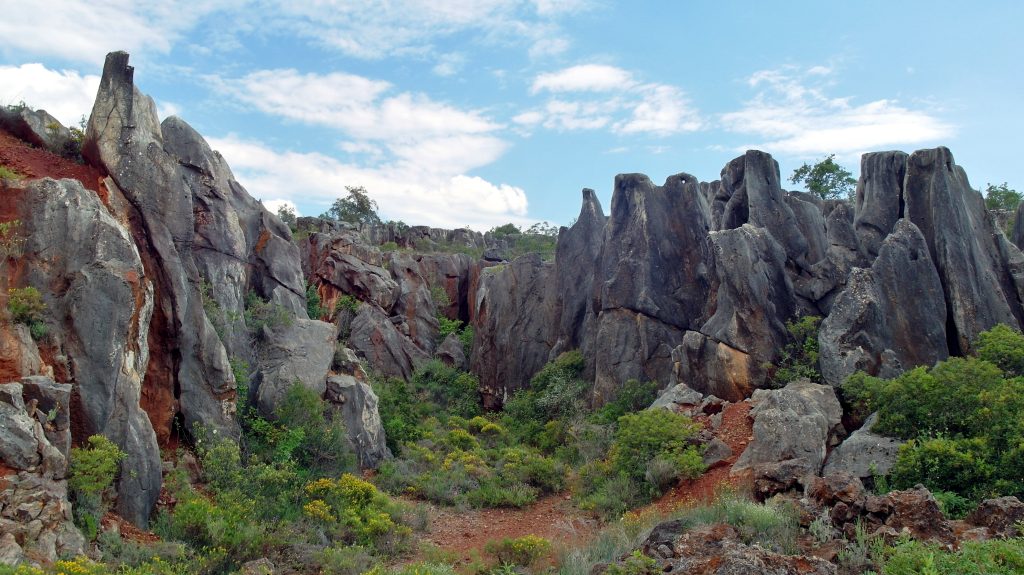
Foreign landscape of sinkholes, caves, gorges, needles and other formations from limestone rocks. This place is known mostly to locals; foreign tourists come there less.
 Almeria may be in the east of the region, but this is the wild west of Andalusia. Barely 20 kilometers inland from Almeria stretches a desert, a succession of dusty gullies and canyons, dry river beds, tunnels carved into rock gorges and sun-scorched earth where nothing grows except cacti. The ideal setting for Sergio Leone's spaghetti westerns - he shot The Good, the Bad and the Ugly, among others, here.
Almeria may be in the east of the region, but this is the wild west of Andalusia. Barely 20 kilometers inland from Almeria stretches a desert, a succession of dusty gullies and canyons, dry river beds, tunnels carved into rock gorges and sun-scorched earth where nothing grows except cacti. The ideal setting for Sergio Leone's spaghetti westerns - he shot The Good, the Bad and the Ugly, among others, here.
 A white pueblo in the national park of the same name, from where miles of hiking trails wind toward surrounding green mountains. Grazalema also makes an excellent base for exploring the region's other pueblos blancos. Attention, cheese lovers: the famous Payoyo comes from here. In the village of El Bosque, learn all about it at a cheese museum.
A white pueblo in the national park of the same name, from where miles of hiking trails wind toward surrounding green mountains. Grazalema also makes an excellent base for exploring the region's other pueblos blancos. Attention, cheese lovers: the famous Payoyo comes from here. In the village of El Bosque, learn all about it at a cheese museum.
 Fans of Game of Thrones should pass in Almodóvar del Río, a village about 25 kilometers west of Córdoba. They will recognize the castle of House Tyrell.
Fans of Game of Thrones should pass in Almodóvar del Río, a village about 25 kilometers west of Córdoba. They will recognize the castle of House Tyrell.
 Lanjarón is the star of la Alpujarra. This pueblo is best known as the Spa of Spain; the best-known brand of bottled water comes from here. No wonder Lanjarón is all about water. Nice touch: the water is also said to be therapeutic.
Lanjarón is the star of la Alpujarra. This pueblo is best known as the Spa of Spain; the best-known brand of bottled water comes from here. No wonder Lanjarón is all about water. Nice touch: the water is also said to be therapeutic.
 A pueblo with a skyline - and what a one! An ancient Moorish castle shines like a crown atop this white village. Add to this the only round church built in Spain after the 15th century - the Iglesia de Encarnación - and you know that Montefrío is of exceptional historical value. You can fortify the inner man at any local cafe with morcilla, Spanish blood sausage.
A pueblo with a skyline - and what a one! An ancient Moorish castle shines like a crown atop this white village. Add to this the only round church built in Spain after the 15th century - the Iglesia de Encarnación - and you know that Montefrío is of exceptional historical value. You can fortify the inner man at any local cafe with morcilla, Spanish blood sausage.
 This mountain range is sandwiched between Portugal to the west and Extramadura to the north. In many parts of the sierra, you are so close to your Iberian neighbor that Portuguese radio stations come through more smoothly than Spanish ones. Its borders are marked by rivers and ruins and are among the oldest in Europe. Smuggling here was long a way to make ends meet and pad the coffers. Speaking of bacon, Spain's best jamón, from black pigs, comes from here.
In Zufre, horses race through the old cobblestone roads in late August, spectators cheer the spectacle from their balconies. Santa Ana la Real is a heaven for hikers. And Aracena is a great base from which to explore all that beauty - the largest village in the sierra of the same name, with a cave complex, a castle and a slew of pot stores selling the region's typical red ceramics.
This mountain range is sandwiched between Portugal to the west and Extramadura to the north. In many parts of the sierra, you are so close to your Iberian neighbor that Portuguese radio stations come through more smoothly than Spanish ones. Its borders are marked by rivers and ruins and are among the oldest in Europe. Smuggling here was long a way to make ends meet and pad the coffers. Speaking of bacon, Spain's best jamón, from black pigs, comes from here.
In Zufre, horses race through the old cobblestone roads in late August, spectators cheer the spectacle from their balconies. Santa Ana la Real is a heaven for hikers. And Aracena is a great base from which to explore all that beauty - the largest village in the sierra of the same name, with a cave complex, a castle and a slew of pot stores selling the region's typical red ceramics.
 These two small towns are almost always mentioned in the same breath. They largely reflect the Moorish 9th century and the Reconquista of the 13th century. Both have been awarded by UNESCO. On the outskirts of Úbeda is a visitor center about olive oil - where you can not only taste and buy the tasty goodness, but where you also look out over vast olive groves. And with its narrow alleys surrounding a cathedral, Baeza is among the best Spain has to offer in terms of Italian Renaissance architecture.
These two small towns are almost always mentioned in the same breath. They largely reflect the Moorish 9th century and the Reconquista of the 13th century. Both have been awarded by UNESCO. On the outskirts of Úbeda is a visitor center about olive oil - where you can not only taste and buy the tasty goodness, but where you also look out over vast olive groves. And with its narrow alleys surrounding a cathedral, Baeza is among the best Spain has to offer in terms of Italian Renaissance architecture.
 Day trippers from Nerja and Málaga discover Frigiliana in ever-increasing numbers, yet the town manages to retain its charm. With streets that invite strolling, you may understand why this gem regularly makes it to the list of "pueblos mas bonitos de España.
Day trippers from Nerja and Málaga discover Frigiliana in ever-increasing numbers, yet the town manages to retain its charm. With streets that invite strolling, you may understand why this gem regularly makes it to the list of "pueblos mas bonitos de España.
 Foreign landscape of sinkholes, caves, gorges, needles and other formations from limestone rocks. This place is known mostly to locals; foreign tourists come there less.
Foreign landscape of sinkholes, caves, gorges, needles and other formations from limestone rocks. This place is known mostly to locals; foreign tourists come there less.









